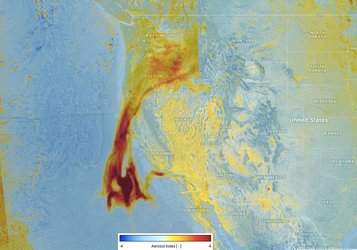Accept all cookies Accept only essential cookies See our Cookie Notice

About ESA
The European Space Agency (ESA) is Europe’s gateway to space. Its mission is to shape the development of Europe’s space capability and ensure that investment in space continues to deliver benefits to the citizens of Europe and the world.
Highlights
ESA - United space in Europe
This is ESA ESA facts Member States & Cooperating States Funding Director General Top management For Member State Delegations European vision European Space Policy ESA & EU Space Councils Responsibility & Sustainability Annual Report Calendar of meetings Corporate newsEstablishments & sites
ESA Headquarters ESA ESTEC ESA ESOC ESA ESRIN ESA EAC ESA ESAC Europe's Spaceport ESA ESEC ESA ECSAT Brussels Office Washington OfficeWorking with ESA
Business with ESA ESA Commercialisation Gateway Law at ESA Careers Cyber resilience at ESA IT at ESA Newsroom Partnerships Merchandising Licence Education Open Space Innovation Platform Integrity and Reporting Administrative Tribunal Health and SafetyMore about ESA
History ESA Historical Archives Exhibitions Publications Art & Culture ESA Merchandise Kids Diversity ESA Brand Centre ESA ChampionsLatest
Space in Member States
Find out more about space activities in our 23 Member States, and understand how ESA works together with their national agencies, institutions and organisations.
Science & Exploration
Exploring our Solar System and unlocking the secrets of the Universe
Go to topicAstronauts
Missions
Juice Euclid Webb Solar Orbiter BepiColombo Gaia ExoMars Cheops Exoplanet missions More missionsActivities
International Space Station Orion service module Gateway Concordia Caves & Pangaea BenefitsLatest
Space Safety
Protecting life and infrastructure on Earth and in orbit
Go to topicAsteroids
Asteroids and Planetary Defence Asteroid danger explained Flyeye telescope: asteroid detection Hera mission: asteroid deflection Near-Earth Object Coordination CentreSpace junk
About space debris Space debris by the numbers Space Environment Report In space refuelling, refurbishing and removingSafety from space
Clean Space ecodesign Zero Debris Technologies Space for Earth Supporting Sustainable DevelopmentLatest
Applications
Using space to benefit citizens and meet future challenges on Earth
Go to topicObserving the Earth
Observing the Earth Future EO Copernicus Meteorology Space for our climate Satellite missionsCommercialisation
ESA Commercialisation Gateway Open Space Innovation Platform Business Incubation ESA Space SolutionsEnabling & Support
Making space accessible and developing the technologies for the future
Go to topicBuilding missions
Space Engineering and Technology Test centre Laboratories Concurrent Design Facility Preparing for the future Shaping the Future Discovery and Preparation Advanced Concepts TeamSpace transportation
Space Transportation Ariane Vega Space Rider Future space transportation Boost! Europe's Spaceport Launches from Europe's Spaceport from 2012Latest

Sweden in flames
Thank you for liking
You have already liked this page, you can only like it once!
With Europe in the grip of a heatwave and little rain, the scorched ground and dry vegetation is succumbing to fire. Fires have now broken out as far as the Arctic Circle, in Sweden. This animation shows images from the Copernicus Sentinel-2 and Sentinel-3 missions.
The wider view, which stretches from the west coast of Norway to central Sweden, was captured by Sentinel-3 on 17 July 2018. Here, smoke can be seen billowing from several fires. The closer view was captured on the same day by Sentinel-2. Here, flames and smoke from two of the fires can be seen clearly, along with smoke from other fires in the vicinity.
The zoom-in from Sentinel-2 and the wider view from Sentinel-3 are also available for separate download.
The fires have led to the authorities evacuating some villages and appealing for help from other countries, and concerns that the current record temperatures and drought are linked to climate change.
There are said to be around 50 fires now burning in the country. Through July there have been three times as many fires as there were last year.
Jonas Olsson from the Swedish Meteorological and Hydrological Institute is reported to have said, “It’s very, very dry in most of Sweden. The flows in the rivers and lakes are exceptionally low, except in the very northern part of the country. We have water shortages.
“Rainfall has only been around a seventh of the normal amount, the lowest since record-keeping began in the late 19th century.”
While the focus is clearly on trying to extinguish these fires, the Copernicus Sentinel missions offer an eye in the sky to identify where fires have broken out. This is especially valuable in areas that are sparsely populated.
The Swedish Civil Contingencies Agency activated the Copernicus Emergency Mapping Serving to map the major fires.
Sentinel-2 carries a high-resolution multispectral imager and Sentinel-3 carries a suite of instruments including an ocean and land imaging instrument. The missions offer complementary views of Earth to help monitor environmental change and events such as these fires.
-
CREDIT
contains modified Copernicus Sentinel data (2018), processed by ESA -
LICENCE
ESA Standard Licence and Additional permission may be required
(contact spaceinimages@esa.int for further information)

Smoke from fires in Sweden

Zooming in on fires in Sweden

Greenland smoke

California in flames















 Germany
Germany
 Austria
Austria
 Belgium
Belgium
 Denmark
Denmark
 Spain
Spain
 Estonia
Estonia
 Finland
Finland
 France
France
 Greece
Greece
 Hungary
Hungary
 Ireland
Ireland
 Italy
Italy
 Luxembourg
Luxembourg
 Norway
Norway
 The Netherlands
The Netherlands
 Poland
Poland
 Portugal
Portugal
 Czechia
Czechia
 Romania
Romania
 United Kingdom
United Kingdom
 Slovenia
Slovenia
 Sweden
Sweden
 Switzerland
Switzerland

























